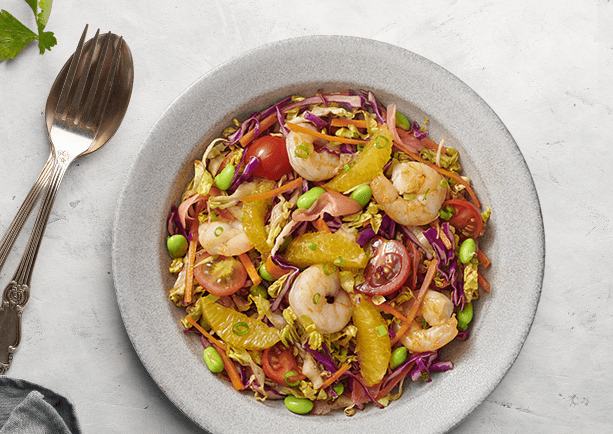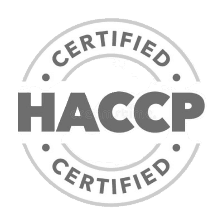20 Days Elimination Diet Meal Plan for Active Lifestyles

Many active people are turning to elimination diets as a useful way to improve their health and performance in sports. What is an elimination diet, anyway? How can it help people who are always on the go? An elimination diet meal plan is a planned way to eat to help you find food intolerances and sensitivities by gradually removing common allergens and irritants from your diet.
Not only does it help uncover hidden food triggers and promotes better digestion, clearer skin, and sustained energy levels—all crucial for maintaining an active lifestyle.
This blog will provide a detailed elimination diet meal plan free of common allergens, ensuring that you can fuel your body efficiently while discovering what works best for you. Whether you're new to elimination diets or looking to refine your approach, this guide will set you on the path to better health and performance.
What Exactly Is an Elimination Diet?
An elimination diet identifies food sensitivities by temporarily removing specific foods from your diet and then gradually reintroducing them. This approach helps you determine which foods might be causing issues like bloating, headaches, or fatigue. By following an elimination diet meal plan, you can gain insights into how different foods affect your body, leading to better overall health and improved energy levels, especially for those with active lifestyles. It's a practical tool for anyone looking to tailor their nutrition to their unique needs.
Why People Do Elimination Diets?
People choose elimination diets for several key reasons:
- Identify Food Sensitivities: By systematically removing and reintroducing specific foods, you can pinpoint which foods are causing issues like bloating, headaches, skin problems, or fatigue.
- Manage Chronic Symptoms: This involves alleviating persistent health issues such as digestive discomfort, joint pain, or migraines that may be linked to food intolerances.
- Optimise Physical Performance: An elimination diet meal plan helps reduce inflammation, improve recovery times, and enhance overall physical performance for athletes and fitness enthusiasts.
- Enhance Mental Clarity: To combat brain fog and improve focus by eliminating foods that may cause blood sugar spikes or are challenging to digest.
- Personalize Nutrition: To create a more tailored diet that supports long-term health and wellness by understanding how different foods uniquely affect the body.
- Proactive Health Management: To take control of one's health by using a structured approach to discover which foods are beneficial and which should be avoided.
How to Do an Elimination Diet?
Starting an elimination diet is straightforward if you follow these key steps:
1. Prepare and Plan
- Consult a Professional: Talk to a healthcare provider to ensure you choose the right foods to eliminate and keep your diet balanced.
- Identify Triggers: Common foods to remove include gluten, dairy, soy, nuts, and processed sugars. Your symptoms may guide additional eliminations.
2. Elimination Phase (Days 1-14)
- Remove Foods: Cut out the identified triggers for two weeks. Focus on eating whole foods like lean proteins, vegetables, fruits, and healthy fats.
- Stick to a Plan: Use a pre-planned elimination diet meal plan to avoid mistakes and ensure you’re getting balanced meals.
3. Reintroduction Phase (Days 15-20)
- Add Foods Back Slowly: Reintroduce one food at a time every few days. Watch for any symptoms and keep a food diary to track reactions.
- Monitor Your Body: If symptoms return, that food may be problematic.
4. Track Progress
- Use a Food Diary: Record everything you eat and any symptoms to help identify patterns and triggers.
- Make Adjustments: If a food causes issues, consider limiting or avoiding it in the future.
5. Maintain Balance
- Eat a Variety of Foods: Ensure your diet remains balanced and nutritious, especially if you’re active and need energy.
- Stay Hydrated: Drink plenty of water to support your health.
What are the Foods to Include in an Elimination Diet?
- Lean Proteins: Chicken, turkey, fish, and tofu.
- Vegetables: Leafy greens, broccoli, zucchini, carrots.
- Fruits: Berries, apples, pears (avoid citrus initially).
- Whole Grains: Brown rice, quinoa, gluten-free oats.
- Healthy Fats: Olive oil, avocado, coconut oil.
- Nuts and Seeds: Almonds, chia seeds, flaxseeds.
- Herbs and Spices: Ginger, turmeric, garlic (fresh, not powdered).
What are the Foods to Eliminate in an Elimination Diet?
- Gluten: Wheat, barley, rye, and products containing gluten.
- Dairy: Milk, cheese, yogurt, and other dairy products.
- Soy: Soybeans, tofu (if soy-based), soy sauce.
- Processed Sugars: Sweets, candies, sodas, and other sugar-laden foods.
- Eggs: All forms, including in baked goods.
- Corn: Corn and corn-based products, including corn syrup.
- Nightshades (optional): Tomatoes, potatoes, eggplant, and peppers.
20-Day Elimination Diet Meal Plan
|
Day |
Meal |
Food |
Calories |
|
1 |
Breakfast |
Scrambled eggs with spinach & avocado |
350 |
|
Lunch |
Grilled chicken salad with mixed greens |
400 |
|
|
Dinner |
Baked salmon with quinoa and steamed broccoli |
500 |
|
|
Snack |
Apple slices with almond butter |
180 |
|
|
Total |
1430 |
||
|
2 |
Breakfast |
Oatmeal with berries and chia seeds |
300 |
|
Lunch |
Turkey lettuce wraps with hummus |
350 |
|
|
Dinner |
Stir-fried tofu with vegetables and brown rice |
450 |
|
|
Snack |
Carrot sticks with guacamole |
150 |
|
|
Total |
1250 |
||
|
3 |
Breakfast |
Smoothie with spinach, banana, and almond milk |
250 |
|
Lunch |
Quinoa salad with grilled veggies |
400 |
|
|
Dinner |
Grilled chicken with sweet potato and green beans |
500 |
|
|
Snack |
Mixed nuts |
200 |
|
|
Total |
1350 |
||
|
4 |
Breakfast |
Scrambled eggs with avocado and tomatoes |
350 |
|
Lunch |
Lentil soup with a side salad |
350 |
|
|
Dinner |
Baked cod with roasted Brussels sprouts |
450 |
|
|
Snack |
Sliced cucumber with hummus |
120 |
|
|
Total |
1270 |
||
|
5 |
Breakfast |
Greek yogurt with mixed berries and honey |
300 |
|
Lunch |
Chicken and avocado salad |
400 |
|
|
Dinner |
Grilled shrimp with asparagus and brown rice |
450 |
|
|
Snack |
Handful of almonds |
180 |
|
|
Total |
1330 |
||
|
6 |
Breakfast |
Smoothie with kale, pineapple, and coconut milk |
250 |
|
Lunch |
Turkey salad with olive oil and lemon dressing |
350 |
|
|
Dinner |
Grilled salmon with sautéed spinach |
500 |
|
|
Snack |
Celery sticks with almond butter |
150 |
|
|
Total |
1250 |
||
|
7 |
Breakfast |
Scrambled eggs with mushrooms and spinach |
350 |
|
Lunch |
Quinoa and chickpea salad |
400 |
|
|
Dinner |
Baked chicken with roasted sweet potatoes |
500 |
|
|
Snack |
Mixed berries |
120 |
|
|
Total |
1370 |
||
|
8 |
Breakfast |
Oatmeal with banana and almond butter |
350 |
|
Lunch |
Lentil salad with cucumbers and tomatoes |
350 |
|
|
Dinner |
Grilled tofu with stir-fried veggies |
450 |
|
|
Snack |
Apple slices |
80 |
|
|
Total |
1230 |
||
|
9 |
Breakfast |
Smoothie with spinach, mango, and coconut water |
250 |
|
Lunch |
Turkey wraps with avocado and lettuce |
350 |
|
|
Dinner |
Grilled fish with roasted carrots and quinoa |
500 |
|
|
Snack |
Mixed nuts |
200 |
|
|
Total |
1300 |
||
|
10 |
Breakfast |
Scrambled eggs with avocado and salsa |
350 |
|
Lunch |
Mixed greens with grilled chicken and olive oil |
350 |
|
|
Dinner |
Baked salmon with quinoa and spinach |
500 |
|
|
Snack |
Carrot sticks with hummus |
120 |
|
|
Total |
1320 |
||
|
11 |
Breakfast |
Smoothie with kale, blueberries, and almond milk |
250 |
|
Lunch |
Turkey salad with mixed greens |
350 |
|
|
Dinner |
Grilled chicken with sweet potato and asparagus |
500 |
|
|
Snack |
Sliced cucumber with guacamole |
150 |
|
|
Total |
1250 |
||
|
12 |
Breakfast |
Oatmeal with berries and chia seeds |
300 |
|
Lunch |
Lentil soup with a side salad |
350 |
|
|
Dinner |
Baked cod with roasted vegetables |
450 |
|
|
Snack |
Handful of almonds |
180 |
|
|
Total |
1280 |
||
|
13 |
Breakfast |
Scrambled eggs with avocado and tomatoes |
350 |
|
Lunch |
Chicken and quinoa salad |
400 |
|
|
Dinner |
Grilled shrimp with brown rice and broccoli |
500 |
|
|
Snack |
Apple slices with almond butter |
180 |
|
|
Total |
1430 |
||
|
14 |
Breakfast |
Smoothie with spinach, banana, and coconut milk |
250 |
|
Lunch |
Turkey wraps with lettuce and avocado |
350 |
|
|
Dinner |
Grilled salmon with roasted Brussels sprouts |
500 |
|
|
Snack |
Mixed nuts |
200 |
|
|
Total |
1300 |
||
|
15 |
Breakfast |
Oatmeal with chia seeds and berries |
300 |
|
Lunch |
Quinoa salad with grilled veggies |
400 |
|
|
Dinner |
Baked chicken with sweet potato and spinach |
500 |
|
|
Snack |
Mixed berries |
120 |
|
|
Total |
1320 |
||
|
16 |
Breakfast |
Scrambled eggs with mushrooms and spinach |
350 |
|
Lunch |
Lentil salad with cucumbers and tomatoes |
350 |
|
|
Dinner |
Grilled tofu with stir-fried veggies |
450 |
|
|
Snack |
Carrot sticks with hummus |
120 |
|
|
Total |
1270 |
||
|
17 |
Breakfast |
Smoothie with kale, mango, and coconut water |
250 |
|
Lunch |
Mixed greens with grilled chicken and avocado |
350 |
|
|
Dinner |
Baked salmon with quinoa and broccoli |
500 |
|
|
Snack |
Handful of almonds |
180 |
|
|
Total |
1280 |
||
|
18 |
Breakfast |
Oatmeal with almond butter and banana |
350 |
|
Lunch |
Turkey salad with mixed greens |
350 |
|
|
Dinner |
Grilled fish with roasted vegetables |
450 |
|
|
Snack |
Apple slices with almond butter |
180 |
|
|
Total |
1330 |
||
|
19 |
Breakfast |
Scrambled eggs with spinach and avocado |
350 |
|
Lunch |
Quinoa and chickpea salad |
400 |
|
|
Dinner |
Grilled shrimp with sweet potato and asparagus |
500 |
|
|
Snack |
Mixed nuts |
200 |
|
|
Total |
1450 |
||
|
20 |
Breakfast |
Smoothie with spinach, pineapple, and almond milk |
250 |
|
Lunch |
Chicken and avocado salad |
400 |
|
|
Dinner |
Baked cod with roasted Brussels sprouts |
450 |
|
|
Snack |
Carrot sticks with guacamole |
150 |
|
|
Total |
1250 |
Notes:
- Calorie Range: The daily calorie intake varies between 1200 and 1450 calories, suitable for moderate to active individuals.
- Adjustments: Caloric intake can be adjusted by modifying portion sizes or adding additional snacks if needed, especially for those with higher energy needs.
- Balanced Nutrition: The meal plan includes a balance of lean proteins, healthy fats, and fiber-rich vegetables to support overall health during the elimination diet.
What are the Common Challenges and Solutions in an Elimination Diet Meal Plan?
1. Cravings for Eliminated Foods
- Find Substitutes: Use alternatives like coconut yogurt or berries to satisfy cravings.
- Stay Hydrated: Drink water frequently, as thirst can mimic hunger.
- Mindful Eating: Focus on the flavours and textures of compliant foods.
2. Navigating Social Situations
- Plan Ahead: Inform hosts of your dietary needs or bring a compliant dish.
- Check Menus: Research restaurant options in advance and ask for modifications.
- Eat Beforehand: Have a small meal to avoid being tempted by non-compliant foods.
3. Maintaining Energy Levels
- Balance Meals: Include lean proteins, healthy fats, and complex carbs.
- Snack Regularly: Keep energy up with snacks like nuts or fruit.
- Monitor and Adjust: Track how foods impact your energy and make necessary adjustments.
What to Expect During the Elimination Diet?
1. Physical Changes
- Improved Digestion: Relief from bloating, gas, and other digestive issues.
- Clearer Skin: Reduction in acne or other skin irritations.
- Potential Weight Loss: Shedding a few pounds due to eliminating processed foods.
2. Mental Changes
- Enhanced Focus: Clearer thinking and reduced brain fog.
- Mood Swings: Possible irritability or emotional fluctuations as your body adjusts.
3. Emotional Impact
- Missing Comfort Foods: Emotional challenges from removing familiar foods.
- Increased Awareness: A heightened sense of how different foods affect your body.
Conclusion
Embarking on a 20-day elimination diet is a decisive step towards understanding your body's unique reactions to different foods. You can identify sensitivities and optimise your health by carefully eliminating potential irritants and reintroducing them individually.
While the process may have challenges, improved digestion, clearer skin, and enhanced mental clarity make it worthwhile. Listen to your body, stay patient, and consult with a healthcare professional if needed. This journey can lead to lasting positive changes in your overall well-being.
FAQs
1. Which foods are commonly excluded during an elimination diet?
Commonly excluded foods include gluten, dairy, soy, eggs, processed sugars, and sometimes nightshades like tomatoes and potatoes. These foods are often potential triggers for sensitivities or intolerances.
2. How can I manage energy levels and maintain performance during the elimination diet?
To maintain energy, focus on balanced meals with lean proteins, healthy fats, and complex carbohydrates. Regular snacking, such as nuts or fruits, and staying consistent with meal timing can help support energy levels, especially during workouts.
3. What role do hydration and electrolytes play during the elimination diet?
Hydration is crucial as it helps flush out toxins and supports digestion. Electrolytes in foods like bananas and leafy greens are essential for maintaining energy and muscle function, particularly when certain foods are restricted.
4. How can I identify food sensitivities or intolerances during the diet?
Keep a detailed food diary, noting what you eat and any symptoms you experience. This helps pinpoint potential triggers during reintroduction when foods are added back one at a time.
5. Can I continue my regular exercise routine while on the elimination diet?
Yes, but you may need to adjust the intensity based on your energy levels. Initially, focus on moderate exercise like walking or yoga, and gradually resume more intense workouts as your body adapts.
6. How can I adjust my meal plan if I notice any adverse reactions or lack of progress?
If adverse reactions occur, eliminate the suspected food again and monitor your symptoms. Lack of progress might mean revisiting your food choices, ensuring balanced nutrition, or consulting a healthcare professional for further guidance.
Related Blogs
Why do most people in the UAE get their calories wrong
Dec 8, 2025 | 6DASH Diet Meal Plan
Nov 11, 2025 | 8Fatty Liver Meal Plan
Oct 31, 2025 | 8Pregnancy Diet Meal Plan
Oct 27, 2025 | 82000 Calorie Meal Plan
Oct 1, 2025 | 8Intermittent Fasting Diet Plan
Sep 5, 2025 | 81000 Calorie Meal Plan
Sep 5, 2025 | 8High-Protein Meal Plans
Sep 5, 2025 | 8How to Choose the Right Meal Plan for Your Fitness Goals
Sep 5, 2025 | 8The GM diet plan: Is it possible to shed fat in just 7 days?
Sep 5, 2025 | 8






